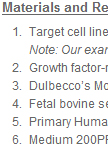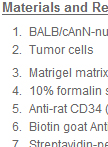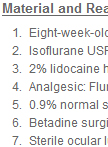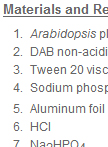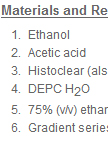Improve Research Reproducibility A Bio-protocol resource
- Protocols
- Articles and Issues
- About
- Become a Reviewer
Past Issue in 2012
Volume: 2, Issue: 18
Cancer Biology
In vitro Human Umbilical Vein Endothelial Cells (HUVEC) Tube-formation Assay
Angiogenesis is involved not only in pathological conditions including cancer biology and non-neoplastic diseases, but also many biological processes including reproduction, development and repair. During angiogenesis, endothelial cells (ECs) undergo activation after binding of angiogenic factors to their receptors, release of proteases to dissolve the basement membrane, migration towards an angiogenic signal, proliferation, and an increase in cell number for new blood vessel formation. Finally, reorganization of ECs forms the three-dimensional vasculature. HUVEC tube-formation assay is one of the simple, but well-established in vitro angiogenesis assays based on the ability of ECs to form three-dimensional capillary-like tubular structures, when cultured on a gel of growth factor-reduced basement membrane extracts. During the assay, ECs differentiate, directionally migrate to align, branch, and form the tubular polygonal networks of blood vessels.
In vivo Matrigel Plug Angiogenesis Assay
The matrigel plug angiogenesis assay is a simple in vivo technique to detect the newly formed blood vessels in the transplanted gel plugs in nude mice. The matrigel matrix is derived from the engelbroth-holm-swarm (EHS) mouse sarcoma, and its composition is comparable to the basement membrane proteins. The matrigel can induce differentiation of a variety of cell types such as hepatocytes, mammary epithelial cells, and endothelial cells. In our case, tumor cells are mixed with the matrigel gel and are injected into the mice. The later immunohistochemistry (IHC) staining with the endothelial marker indicates the presence of the newly formed capillaries in the sectioned gel plugs.
Neuroscience
Mouse Transient Global Ischemia Two-Vessel Occlusion Model
Transient global ischemia in rodents induces delayed death of hippocampal CA1 neurons, as well as in some hilar neurons of the dentate gyrus, medium aspiny neurons of the striatum, pyramidal neurons in neocortical layers II, V and VI, and Purkinje neurons of the cerebellum. In contrast to focal ischemia that mimics regional stroke in humans, this model of global ischemia mimics the brain injury that occurs after human cardiac arrest. Early events include caspase activation, cleavage of anti-death Bcl-2 family proteins and large mitochondrial channel activity. Genetically engineered mice provide opportunities for study such as the knock-in mouse expressing a caspase-resistant form of Bcl-xL found to exhibit markedly reduced mitochondrial channel activity and reduced vulnerability to ischemia-induced neuronal death1. It is therefore relevant to adapt and develop a simple protocol for producing transient global ischemia in mouse2. The two-vessel occlusion model has been specifically developed to provide optimal outcomes in mouse and offers several advantages over the four-vessel occlusion model traditionally used in rat including the relative ease of the procedure as well as only a single day of surgery. However it should be noted that this procedure has a higher morbidity rate compared to other ischemia models as well as a higher degree of variability. These two disadvantages necessitate the use of a larger cohort of animals, which for many healthy breeding transgenic animals is a non-deterring factor.
Plant Science
Detection of Hydrogen Peroxide by DAB Staining in Arabidopsis Leaves
In this protocol, the in situ detection of hydrogen peroxide (one of several reactive oxygen species) is described in mature Arabidopsis rosette leaves by staining with 3,3'-diaminobenzidine (DAB) using an adaptation of previous methods (Thordal-Christensen et al., 1997; Bindschedler et al., 2006; Daudi et al., 2012). DAB is oxidized by hydrogen peroxide in the presence of some haem-containing proteins, such as peroxidases, to generate a dark brown precipitate. This precipitate is exploited as a stain to detect the presence and distribution of hydrogen peroxide in plant cells. The protocol can be modified slightly to detect hydrogen peroxide in different types of plant tissue.
Isolation of Rice Embryo Single Cell Type using Laser Capture Microdissection (LCM)
A lot of transcriptional profiling in plant and animals has used RNAs samples from many different cell types. The laser-capture microdissection (LCM) can identify and harvest pure cellular populations directly from heterogenous tissues based on histological identification. The molecules or protein isolated from LCM-captured cells can be suitable for single cell type analysis by using chip expression profiling or sequencing.


